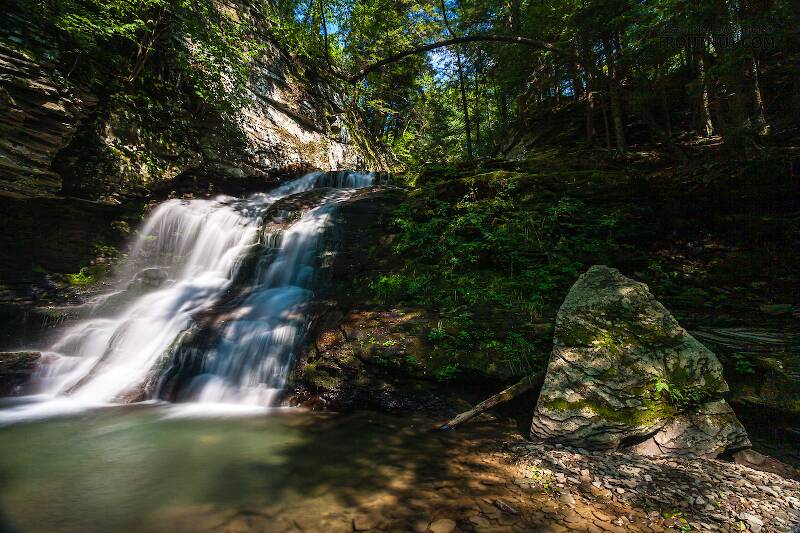
Blue-winged Olives
Baetis
Tiny Baetis mayflies are perhaps the most commonly encountered and imitated by anglers on all American trout streams due to their great abundance, widespread distribution, and trout-friendly emergence habits.

Mayfly Species Procloeon rufostrigatum (Tiny Sulphur Duns)
Where & when
Time of year : June through October; peaks in July and August
In 10 records from GBIF, adults of this species have been collected during July (30%), August (30%), September (20%), and June (20%).
In 3 records from GBIF, this species has been collected at elevations of 2270, 2854, and 29016 ft.
Species Range
Physical description
Most physical descriptions on Troutnut are direct or slightly edited quotes from the original scientific sources describing or updating the species, although there may be errors in copying them to this website. Such descriptions aren't always definitive, because species often turn out to be more variable than the original describers observed. In some cases, only a single specimen was described! However, they are useful starting points.
Male Spinner
Wing length: 5 mm
Abdominal tergites of male imago pale yellowish white, each with a row of four minute red transverse dashes on the posterior margin on each side.
Face and thorax deep blackish brown. Thoracic sternum deep black brown; posterior margin of mesonotum and pleural sutures tinged with pale yellowish brown. Legs pale yellowish white. Wings hyaline. Hind wing long and narrow, two longitudinal veins (see fig. 165). Abdominal segments 2-6 pale yellowish white; each tergite with a lateral row of four minute red transverse dashes on each side, these dashes situated on the posterior margin of the tergite. Tergites 7-10 deep chocolate brown, sternites alabaster white; the pleural fold forms a sharp division between these two colors. A faint slightly curved hair-line of black marks the spiracular area, on the pale segments. Forceps and tails white. Inner margin of second joint of the forceps with a poorly developed inward bulge, much less apparent than in C. caliginosum (now a synonym of Procloeon caliginosum) (see fig. 166).
From the allied C. caliginosum, this species may be separated by the smaller size, and the lesser development of the bulge on the second forceps joint. The much narrower hind wing distinguishes it from C. bifurcatum (now a synonym of Anafroptilum bifurcatum).
Start a Discussion of Procloeon rufostrigatum
References
- Caucci, Al and Nastasi, Bob. 2004. Hatches II. The Lyons Press.
- Knopp, Malcolm and Robert Cormier. 1997. Mayflies: An Angler's Study of Trout Water Ephemeroptera . The Lyons Press.
- Leonard, Justin W. and Fannie A. Leonard. 1962. Mayflies of Michigan Trout Streams. Cranbrook Institute of Science.
- Needham, James G., Jay R. Traver, and Yin-Chi Hsu. 1935. The Biology of Mayflies. Comstock Publishing Company, Inc.
Mayfly Species Procloeon rufostrigatum (Tiny Sulphur Duns)
Species Range
Common Names
Resources
- NatureServe
- Integrated Taxonomic Information System
- Global Biodiversity Information Facility
- Described by McDunnough (1924)


